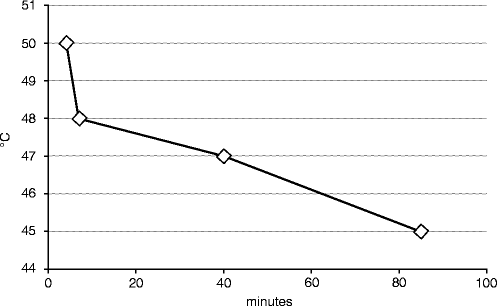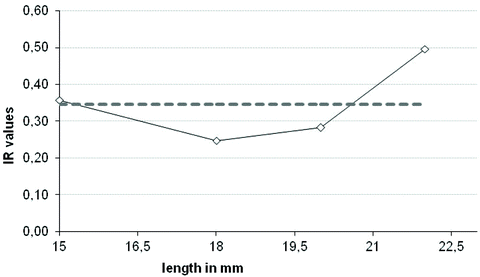Fig. 26.1
IR values of each group subjected to different marinating treatments (groups A, B, and C) with respect to larval length
With regard to thermal treatments, Fig. 26.2 indicates, as mentioned above, that 47°C produced an amount of larval inactivation within an appropriate time interval for appreciating the variability of responses. The IR values as a function of length and the IR mean values for all larvae (IR tot) are reported in Fig. 26.3. Only the group with a mean length of 22 mm had an IR value greater than IR tot.



Fig. 26.2
Temperature:time ratios resulting in inactivation of 100% of the larvae

Fig. 26.3
Relationship between IR and larval length at 47°C. The dotted gray line indicates the IR mean value for all considered larvae (IR tot)
26.4 Discussion
This study highlights the greater resistance that longer Anisakis larvae have to a marinade with high concentrations of NaCl (13%), acetic acid (5%), and citric acid (5%), whereas shorter larvae were more resistant to mild marinating treatments. In the case of thermal treatments, the group with a mean length of 22 mm had the highest resistance. However, the correlation between length and IR values was not linear since the 15-mm group had a greater IR value than did the 18- and 20-mm groups (Fig. 26.3).
Stay updated, free articles. Join our Telegram channel

Full access? Get Clinical Tree


